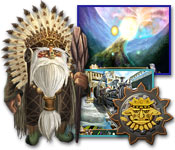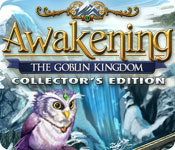Game Review - Dragon Age: Origins: Awakening
Score -4 (Dragon Age: Origins score +12/-8, reviewed here)
Overview
Dragon Age: Origins: Awakening
- Probably the most disappointing part of Awakening is the story. It's just not that interesting. And the quests you do on the side only touch on the overall story, so that they feel very disconnected and irrelevant, and they didn't really advance the story, deepen the mystery, or enlighten you to what's going on. They were just very long sidetrips. In some ways Origins had this as well, but your trips to see the Dwarves and the Dalish at least were ultimately tied in to the main story by the treaties and your quest to assemble an army (not that you actually needed any of them in the end). There was a story here, and a sort of wrap-up to the whole problem of Blights, but it wasn't compellingly told and what you did to get to the end came across as quite boring. What the expansion could have done was improve on the original gameplay, making you interested in replaying it. For example, it could have made the new mechanics/content -- classes, skills, spells, use of runes, etcetera -- available in Origins, making it worthwhile to replay that, especially as some people might have uninstalled their game and not have a savegame to import.
- Some poorly thought out expanded content, and nothing fixed from the previous. For example, runes were strictly for weapons in the original game, and could not be used on mage staves, bows, or crossbows. Nothing changed here, so if you weren't dual-wielding, you lost out. In Awakening, runes are now available for armor, but not for mage robes, so again mages were excluded. They are powerful and useful enough on their own, however.
- Glaring bugs, like two Captain Garavels after in the throne room after defending Vigil's Keep. Or one of the conspirators against you appearing in court after you exposed and killed them.
- The new character specializations sound interesting initially but aren't actually that interesting to use. They are implausibly attained (reading a book can get you fade warrior powers) and compared to their activation cost, not cost efficient. Warriors now get Stamina potions to keep up their stamina and allow them to use powers more frequently, but the actual powers aren't particularly interesting or useful. I found myself using Origins content only in spells and powers, and still using no potions because the game is generally easy enough at Nightmare mode. The low-level stage where High Dragons are dangerous is long past.
(-) Like other titles associated with the developers, such as their early Dungeons and Dragons based games, we see inflated monster scaling for no good reason. We already took points off for this in our review of Dragon Age: Origins, so I'm not taking more off here, but just reiterating this criticism. A fantasy role-playing game is more rooted in plausibility than, say, Diablo or Dungeon Siege II, which plays more like an arcade fighting game. In Dragon Age: Origins: Awakening, even peasants can be level 27 and have epic amounts of health because your main character is of a high level. What they could have done was to leave trivial encounters trivial, and focus their attention on scripting interesting things to do, on plot events, and choices to be made. At a high to epic level, characters should be focussed on doing epic things. There were a lot of missed opportunities here that don't need epic-levelled enemies. Examples:
- "Endurance mode": In Kal'Hirol, there are three broodmothers and supposedly a Darkspawn army gathering. The huge golem you fight is a nice encounter, but where's the darkspawn army? And the final encounter with the broodmothers is also trivial. What could have been done was to swarm the characters with a very long stream of darkspawn. You don't have to kill anyone's FPS with too many monsters on the map at once, but you can keep the characters engaged in a very long combat with constant reinforcements -- use attrition versus inflation.
- Bosses could use more reinforcements or staying power. They don't have to strike harder, just last longer. The Baroness could have been scripted to fade into incorporeal spirit form to partially heal and open tears to the fade, allowing demons to enter and keep the characters busy.
- The prison/gauntlet in the Silverite Mines could have been turned into a rescue quest where the final count of rescued persons adds to the defenders in Amaranthine or Vigil's Keep. No epic combat needed, but instead using skills to protect and heal allies.

